We love to discover the green oases during our tours through a city. Parque del Retiro on the eastern edge of Madrid’s city center is definitely one of the city’s most impressive parks.
What could be nicer than sitting on a bench in the shade, listening to the birds and looking out over a lake? Here we can process the impressions of a city tour and plan new destinations.
However, this is only possible after we have explored the Parque del Retiro, which is even on the UNESCO World Heritage List (under the name Paseo del Prado and Buen Retiro, Landscape of Arts and Sciences).
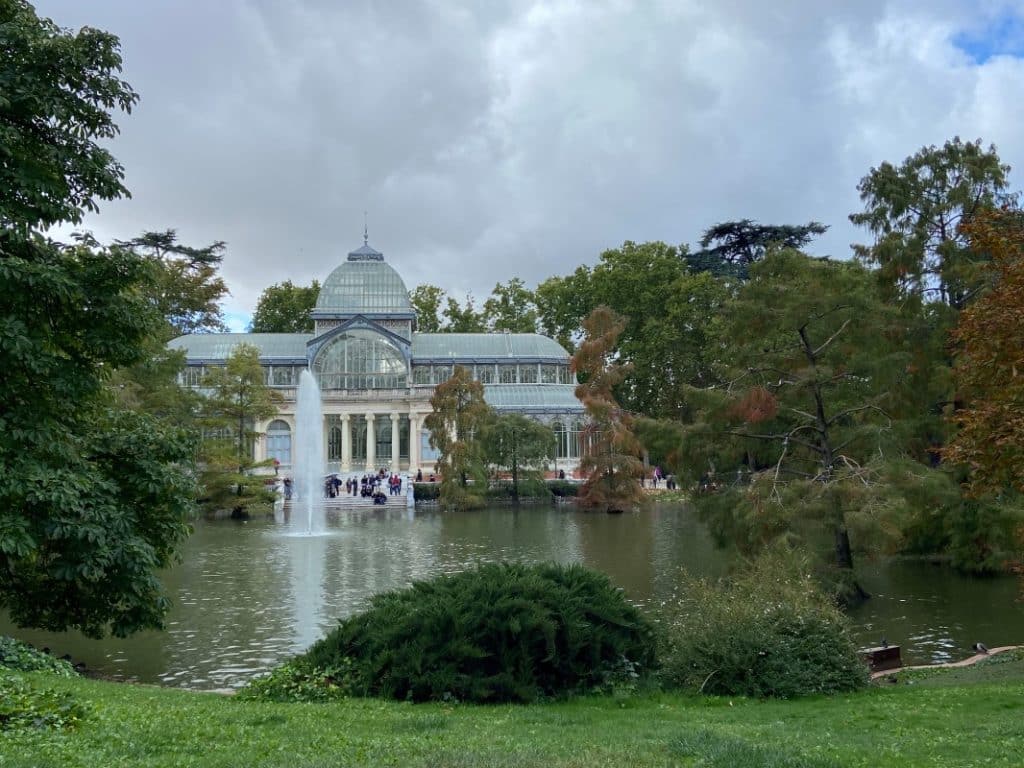
A park is created for the king
During the reign of Philip II, the gardens of the Buen Retiro palace complex were located on a gentle hill near a monastery. Gaspar de Guzmán, Count of Olivares, Duke of Sanlúcar and one of the city’s leading politicians, had the buildings and gardens redesigned from 1632. The architects and landscape designers were commissioned to create a Baroque complex that was to include the artificial lake Estanque del Retiro.
The main user of the park was the king at the time, who resided there in a palace, especially during the warmer months. The citizens of Madrid only had access to a limited area of the park. When the royal family moved to the new Palacio Real, the park lost its importance.
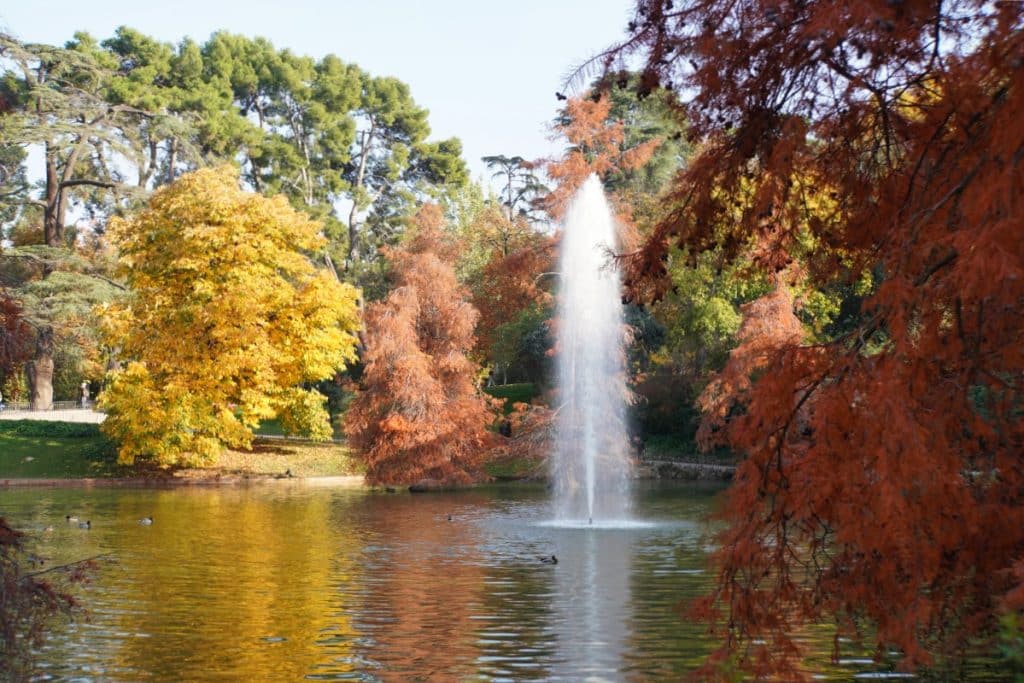
During the Napoleonic Wars, the palace building within the park was looted and destroyed. It was not rebuilt. In 1819, the Museo del Prado was built on the foundations of the unfinished Natural History Museum to the west of the palace.
A park for the people is created
In 1868, after the fall of Queen Isabella II, the city of Madrid took over the grounds of the park and planned to rebuild it. A public park, which was to be fully accessible to the population, was created.
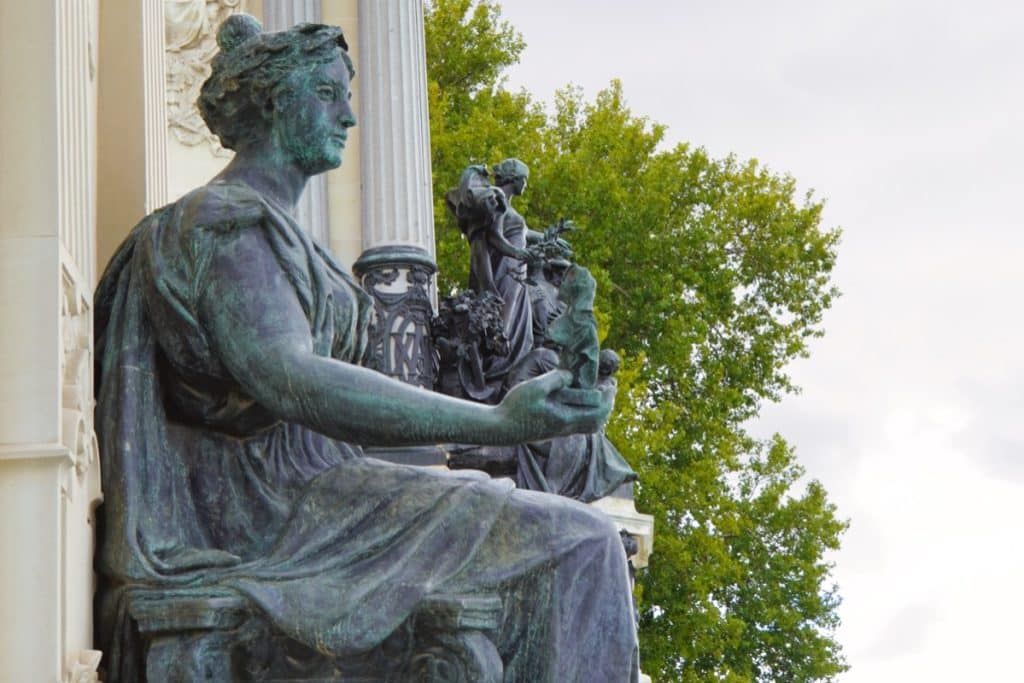
This was followed by reconstruction work, during which only the remains of the royal park and its buildings, such as the artificial lake Estanque del Retiro and the Baroque parterre behind the Puerta Felipe IV with what is probably the oldest tree in Madrid, were preserved. The oldest tree in the city is probably the 627-year-old olive tree, which dates back to around 1396. The seedling was planted in one of the areas near the entrance gate Puerta del Ángel Caído and today there is a stately tree there.
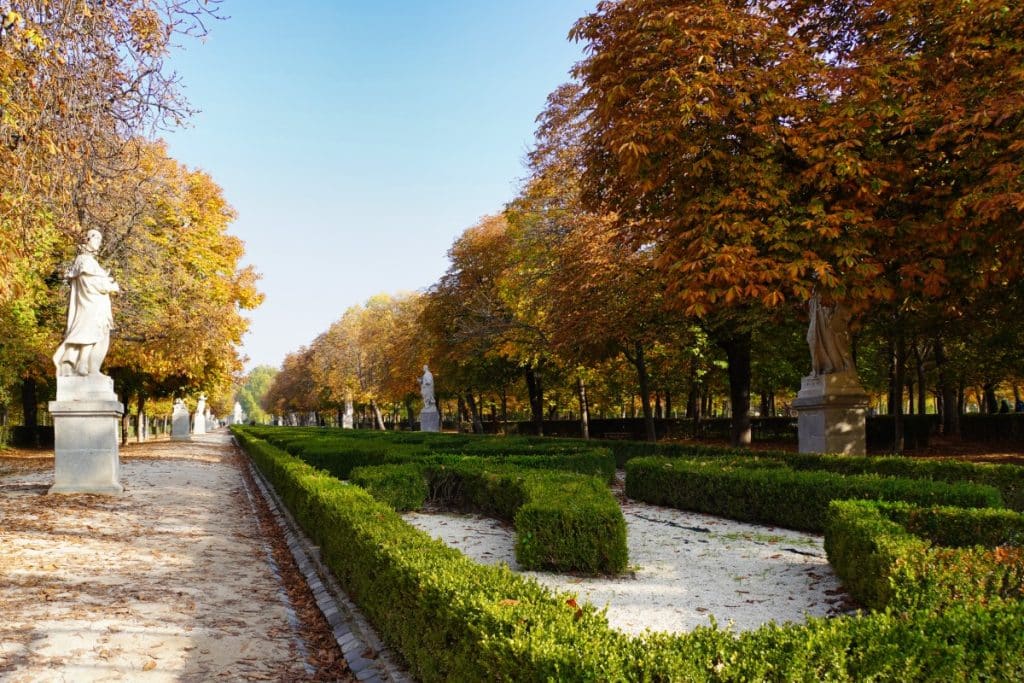
In 1883, the city used the Parque del Retiro for national exhibitions. During these events, new buildings were also constructed, such as the Palacio de Velázquez and the Palacio de Cristal. A few years later, a uniform fence was built around the park, which could now be entered through impressive portals. This fencing has been preserved to this day and the gates still exist. To keep the park quiet and peaceful at night, they are locked.
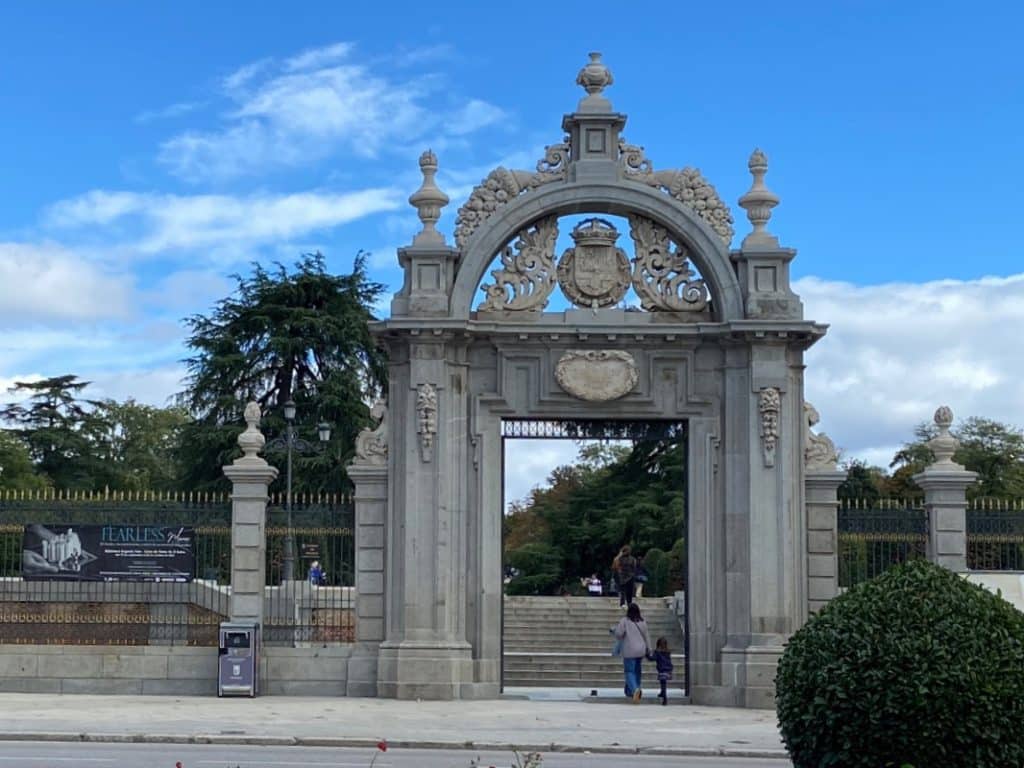
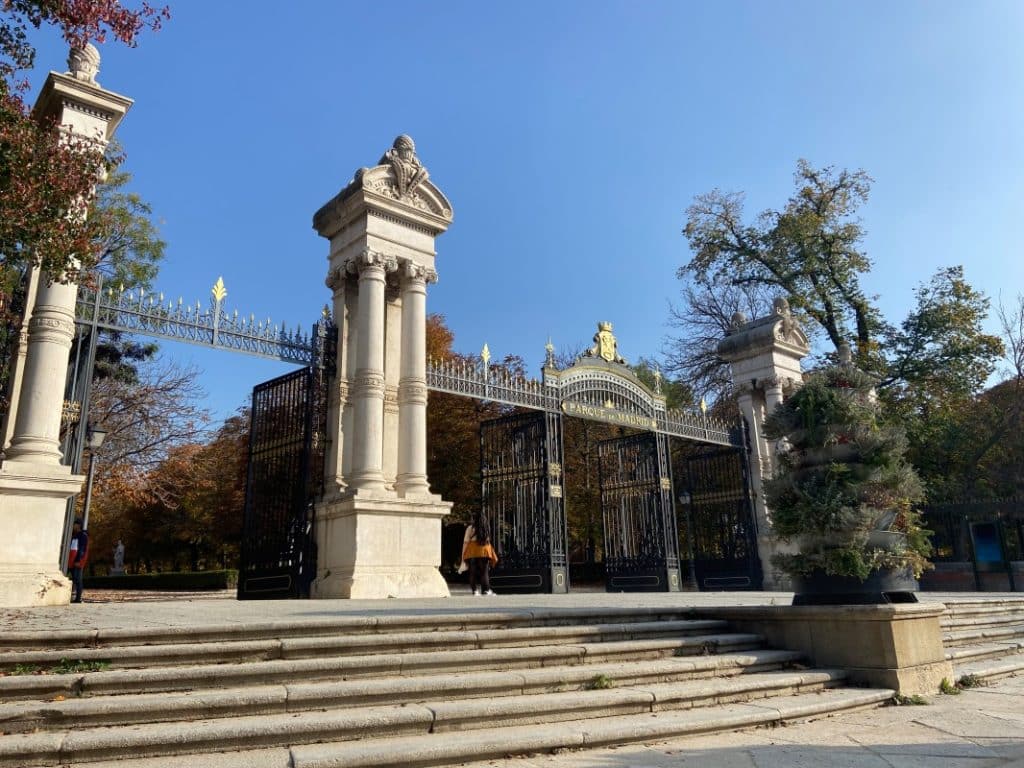
A walk through the Parque del Retiro
If you stroll through the park today, you will find many beautifully laid out avenues. Some are lined with flowerbeds, others with rows of trees. We were able to admire numerous fountains, sculptures by various artists and a rose garden on our tour.
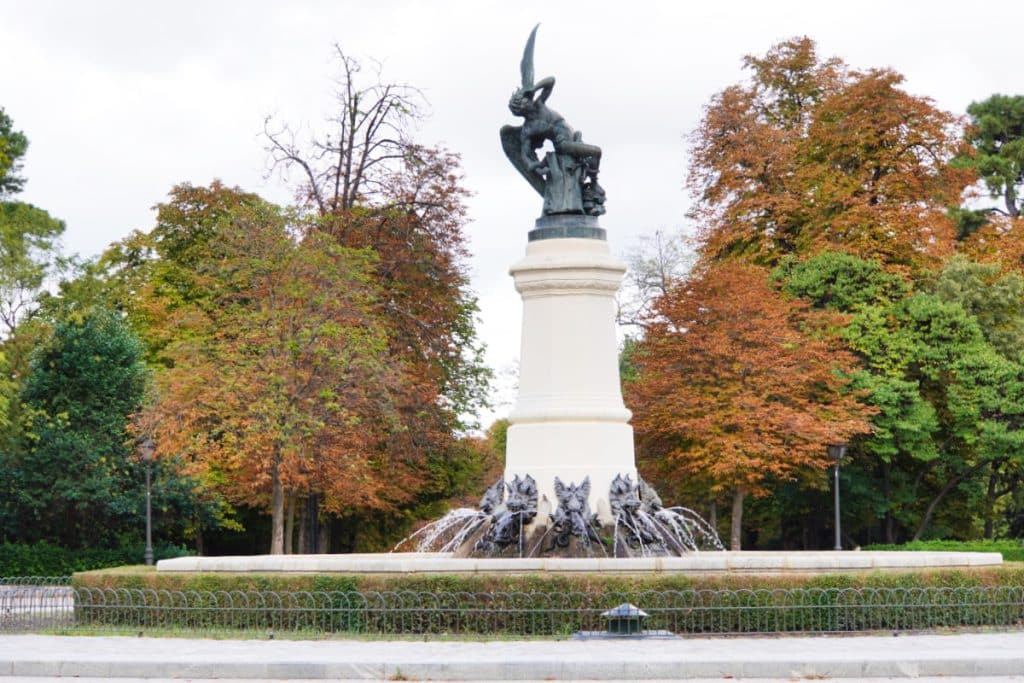
One very special fountain, for example, is the Angel Caído. Created in 1877, the statue depicts Lucifer and is said to be the only representation of Lucifer in the world.
I particularly liked the fact that we were not only able to walk along the wide avenues, but also along winding paths through the dense greenery of the countless trees. We discovered a few small streams with ducks swimming in them. Anyone strolling along here in the hot season will find a refreshing microclimate.
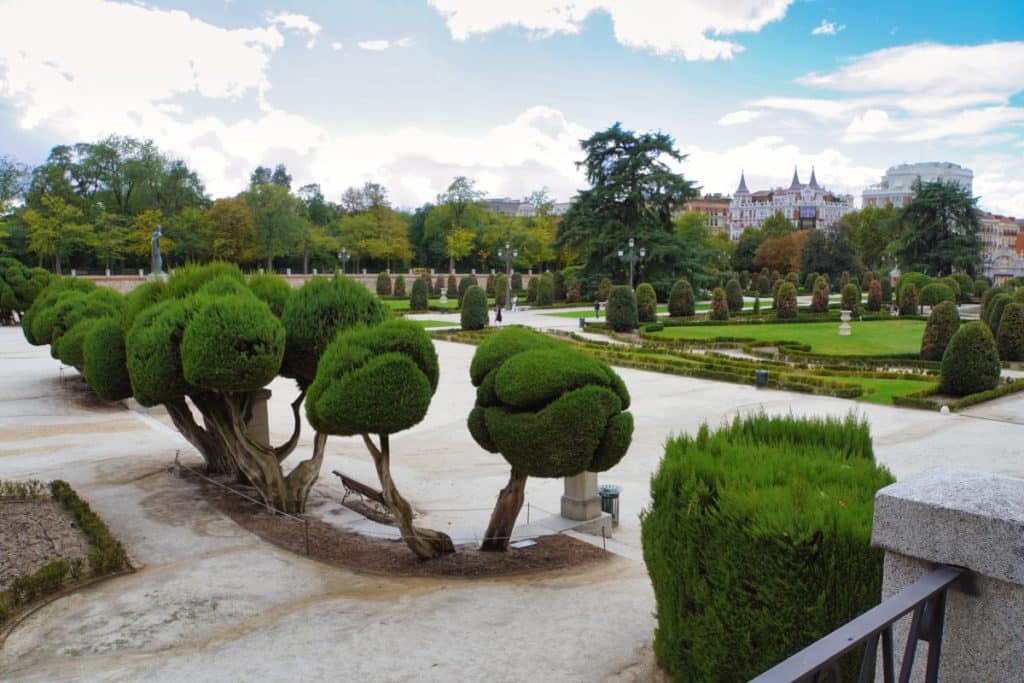
Families also get their money’s worth in the park. I discovered several playgrounds and there are regular puppet theater performances at the weekend.
It was particularly nice to take a break in one of the small garden restaurants by the large lake. We had a drink there and a waffle with vanilla ice cream. While we were sitting there, we could not only watch the rowers on the lake, but also listen to a saxophone player. He stood in front of the restaurant fence and collected money afterwards. As he was not allowed to enter the premises, the audience simply placed a small gift on the fence.
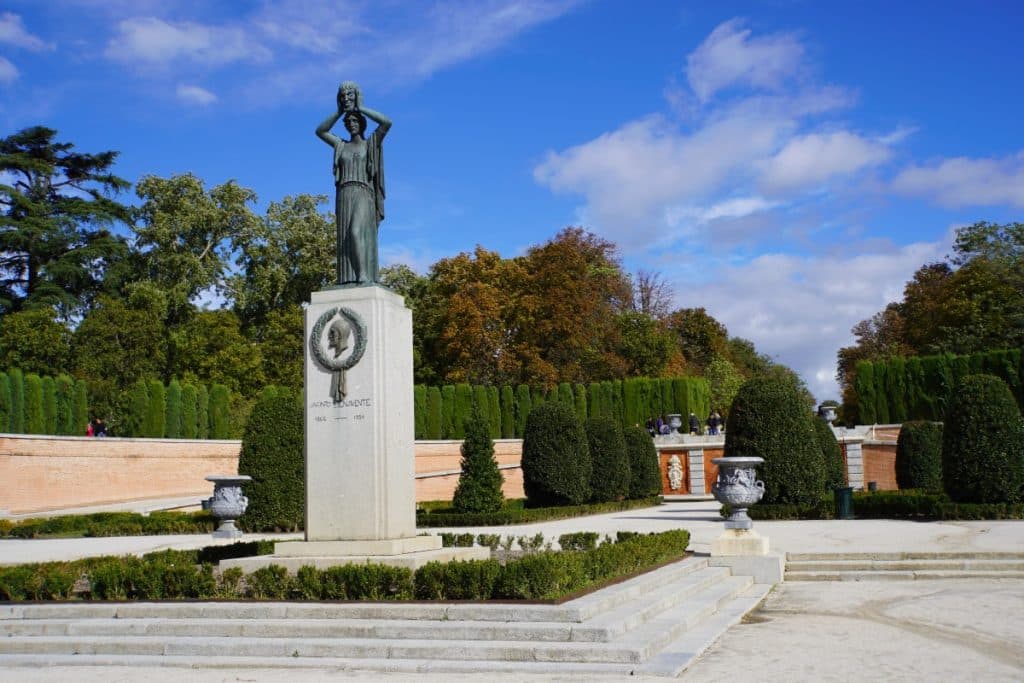
Crystal Palace
One of the highlights of the Parque del Retiro in Madrid is the Crystal Palace. It is located on a small artificial lake and is surrounded by horse chestnut trees. Admittedly, it is a picturesque sight when you look at the palace from the shore of the artificial lake. But when we cross to the other side of the lake and stand directly in front of the Crystal Palace, it’s just “full”. Countless visitors stand in front of the beautiful building and try to pose in front of it. It is almost impossible to take a decent photo of the former gigantic greenhouse from this distance.
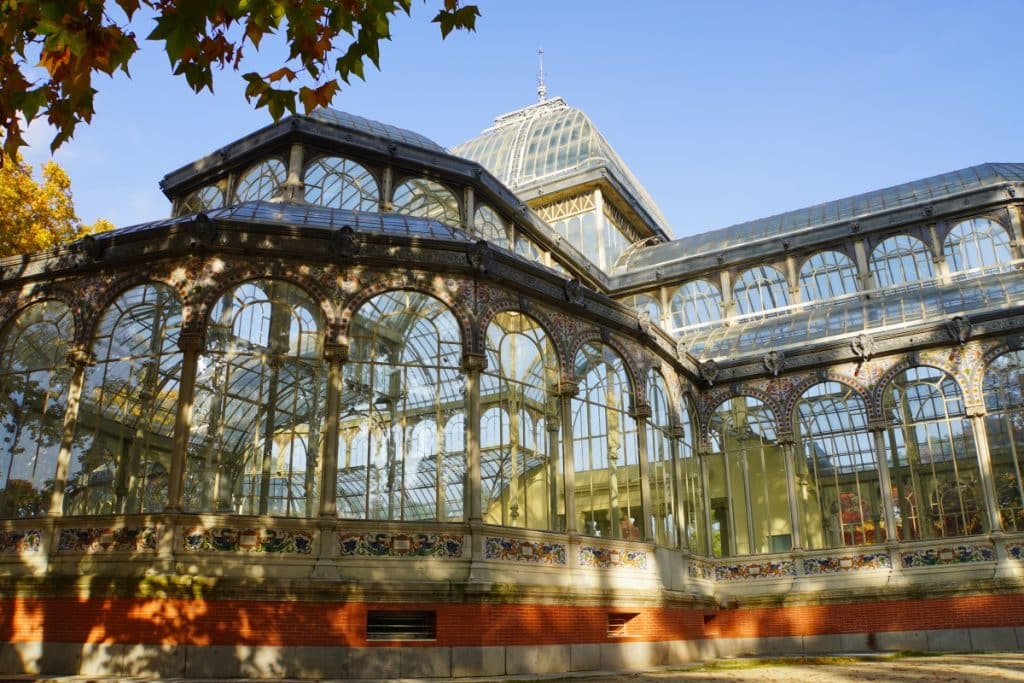
In 1887, the architect Ricardo Velázquez Bosco erected a building made of an iron frame covered with glass on this site. The tropical plants for the “Flora of the Philippine Islands” exhibition held in 1887 were to find a home here. I particularly like the ceramics that decorate the building as a frieze.
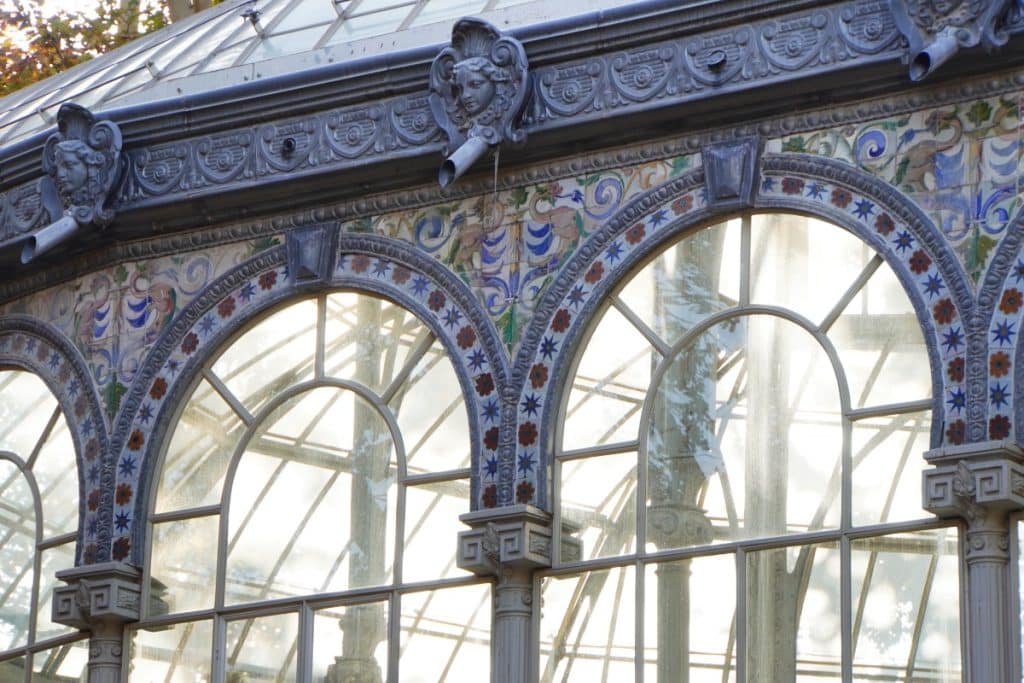
Today, the Reina Sofia Museum uses the Crystal Palace for temporary exhibitions. When we visited, the exhibition room was not in use and you could see very well into the room through the windows.
I find the building, especially the iron construction, very impressive. I would have loved to go inside and I would have loved even more to admire the tropical plants like in a greenhouse.
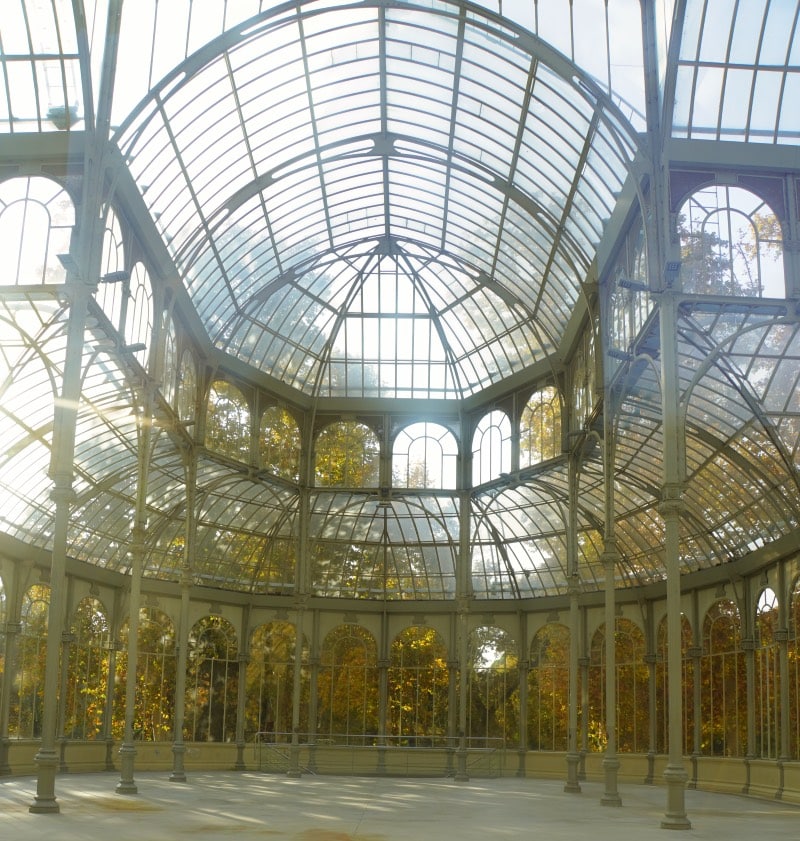
Velázquez Palace
We pass a building that is now used by the Reina Sofia Museum as an exhibition space for special exhibitions.
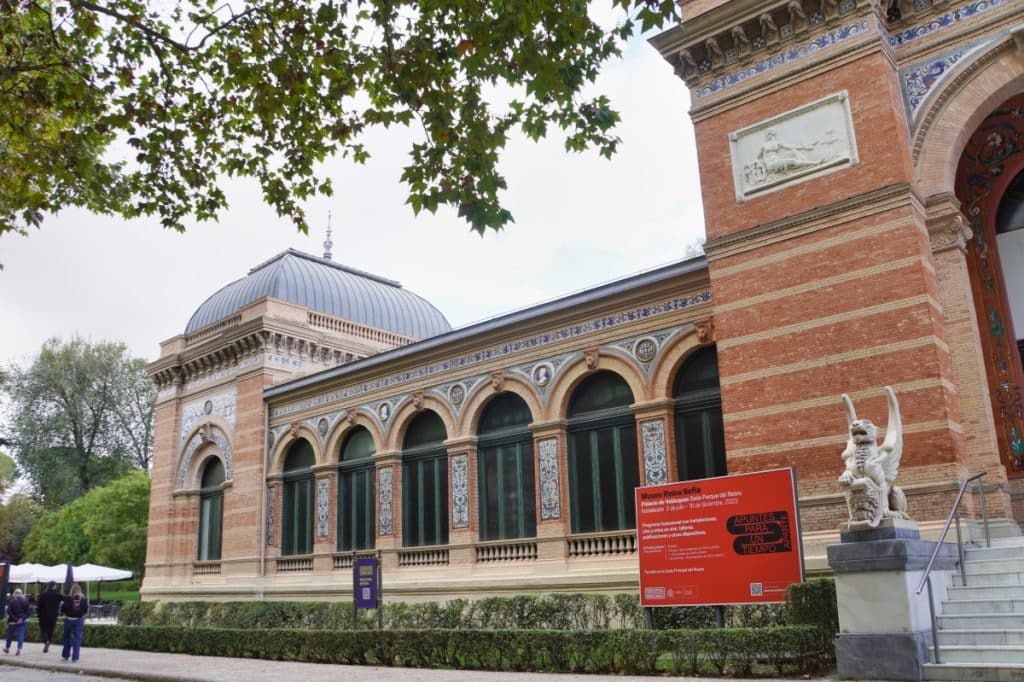
The Velázquez Palace in Retiro Park was built between 1881 and 1883. It was originally built as an exhibition building for the National Mining Exhibition, which took place in Madrid in mid-1883.
If you take a closer look at the building, you will notice some parallels with the Crystal Palace. No wonder, as the architect Ricardo Velázquez Bosco designed and built both buildings in the park. Here, too, there is an iron construction clad in glass, but not on the same scale as the Crystal Palace. In this building, the construction serves as a kind of skylight through which daylight enters the rooms.
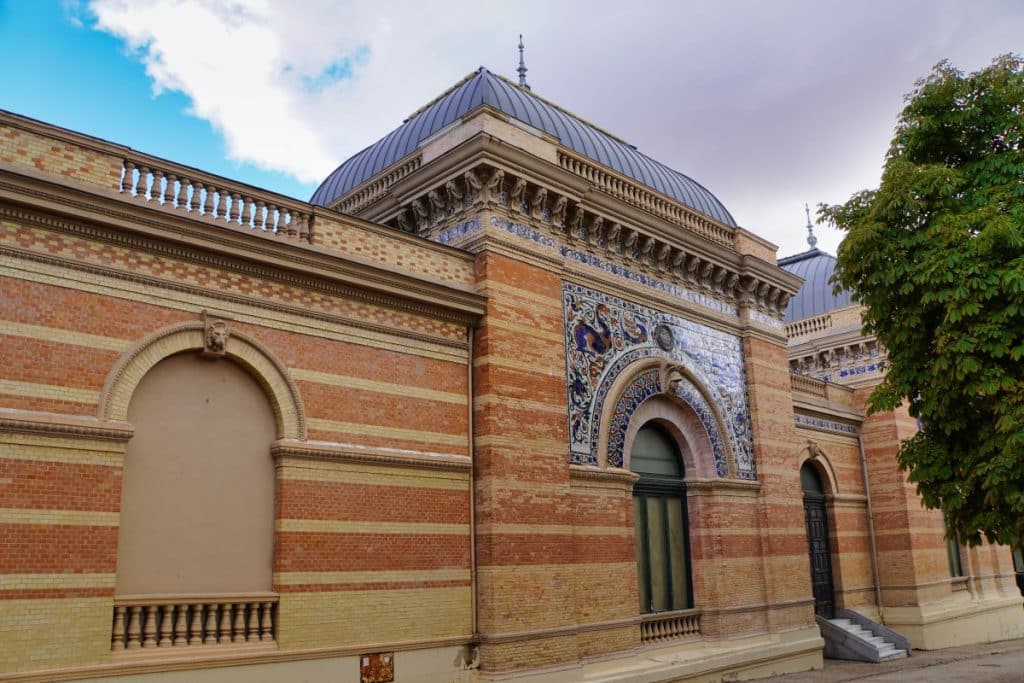
Another parallel is the work with two-tone bricks and tiles. Here too, as in the construction of the Crystal Palace, the ceramist Daniel Zuloaga was involved in the building work. I really like the tiles. It’s a wonderful way of placing highlights in a façade.
Estanque Grande de El Retiro
Next to the Crystal Palace, the large lake is definitely the most famous place in the middle of the Retiro Park. Before our visit, we had seen numerous pictures of rowers in small boats right in front of the monument and decided to take a look.
However, we were there at a very unfortunate time during our first visit in mid-October. It had rained heavily beforehand and it was so windy that day that there were even small waves on the lake. The boat rental was closed and we couldn’t take any photos of boats on the lake. Shortly before our return flight 4 weeks later, we had more luck. Not only had fall arrived in Retiro Park, but on our second visit the sun was shining and the boats were sailing on the lake.
History of the lake
The architect Cristobal de Aguilera created the Estanque Grande de El Retiro pond in 1634-1636 as the centerpiece of the Buen Retiro gardens (a leisure palace). For the amusement of visitors, naval battles were re-enacted there and the king and his entourage were given the opportunity to go boating. Today, anyone who hires a rowing boat from the boat hire shop can take a boat trip in the middle of the city
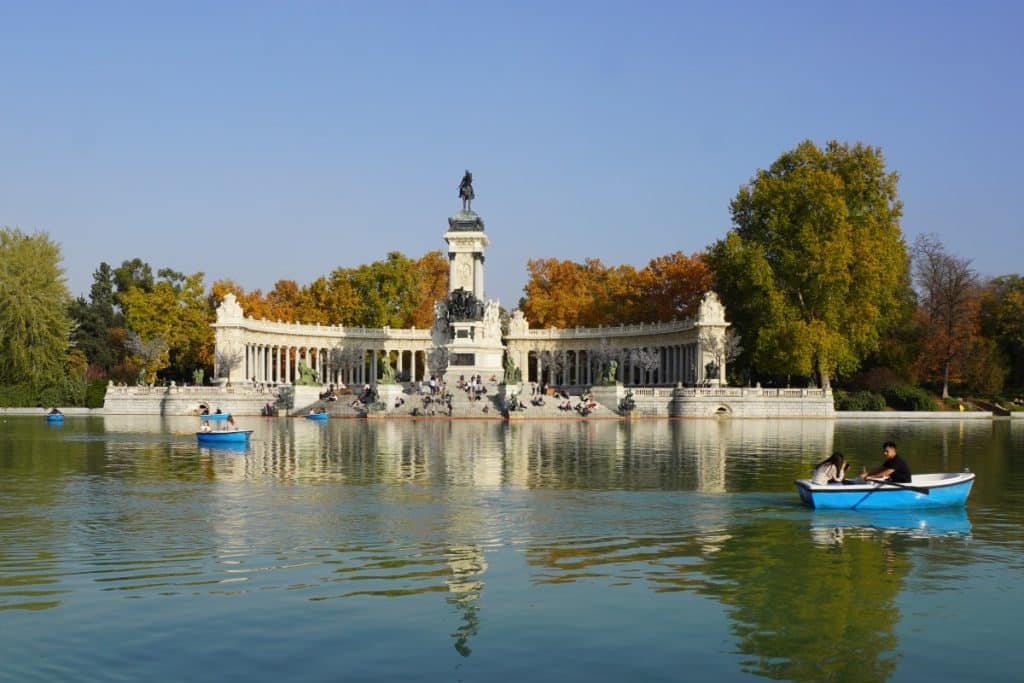
In the past, the park is even said to have had its own shipyards that built ships for the lake. There was a small island in the lake where plays were performed.
The island was flooded at the end of the 18th century. With the help of collected donations, a monument was erected on the shore in honor of the Spanish King Alfonso XII.
Monumento a Alfonso XII in Retiro Park
The huge monument to King Alfonso XII is located on the eastern side of the Estanque Grande de El Retiro lake. It dominates the entire side of the lake and looks very large even from the opposite side.
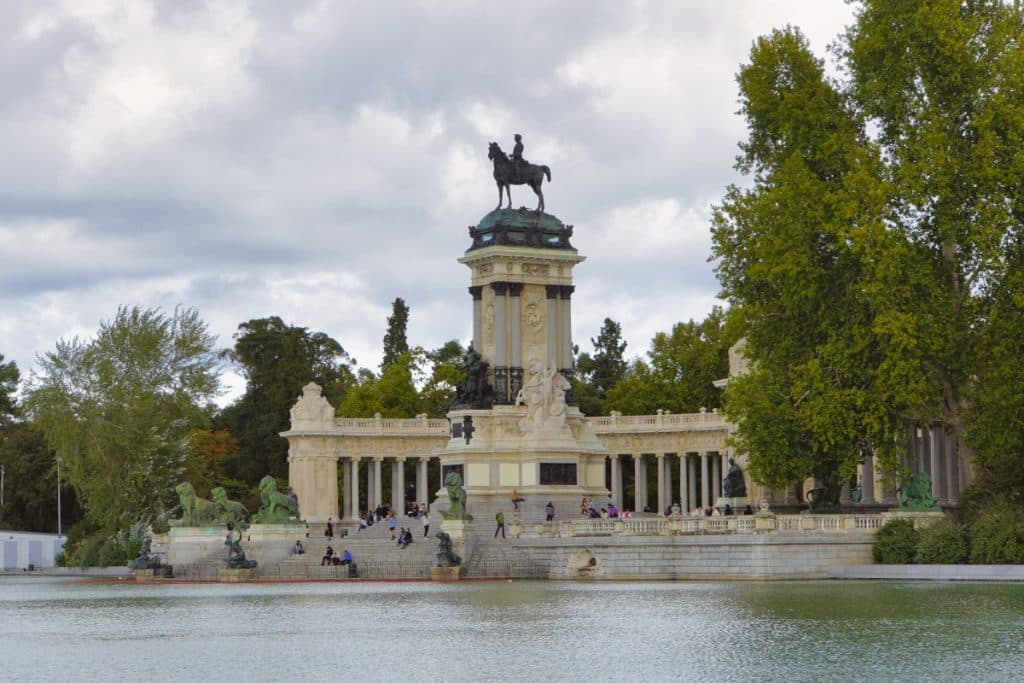
In 1902, on the initiative of the Queen Mother Maria Christina of Austria, a national competition was held to design a monument to King Alfonso XII. The construction of the monument was to be financed by a public collection. The architect José Grases Riera won the competition. His plan envisaged a large colonnade with an equestrian statue of the king and several sculptures as the dominant focal points. Grases Riera died in the middle of the realization of the project. His successor took over the complete planning and engaged over 20 sculptors to produce the various statues.
The gigantic monument was inaugurated in the summer of 1922. It is 30 meters high, 86 meters long and 58 meters wide. The eye-catching centerpiece is the bronze equestrian statue of King Alfonso XII. The base of the monument is particularly striking. Several statues can be found here. These symbolize peace, freedom and progress. I also find the three bronze reliefs in the plinth particularly beautiful.
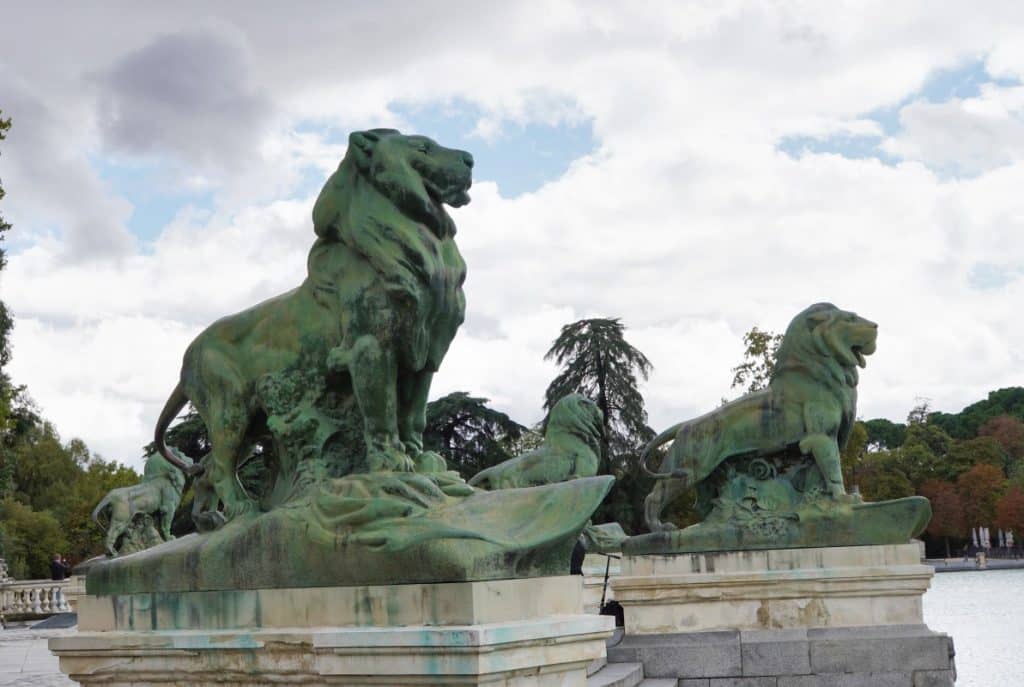
Steps lead down from the monument to the lake. It is not only visitors to the park who like to sit here and enjoy the view of the lake. The architect has also placed stone lions and bronze mermaids here, looking out over the water.
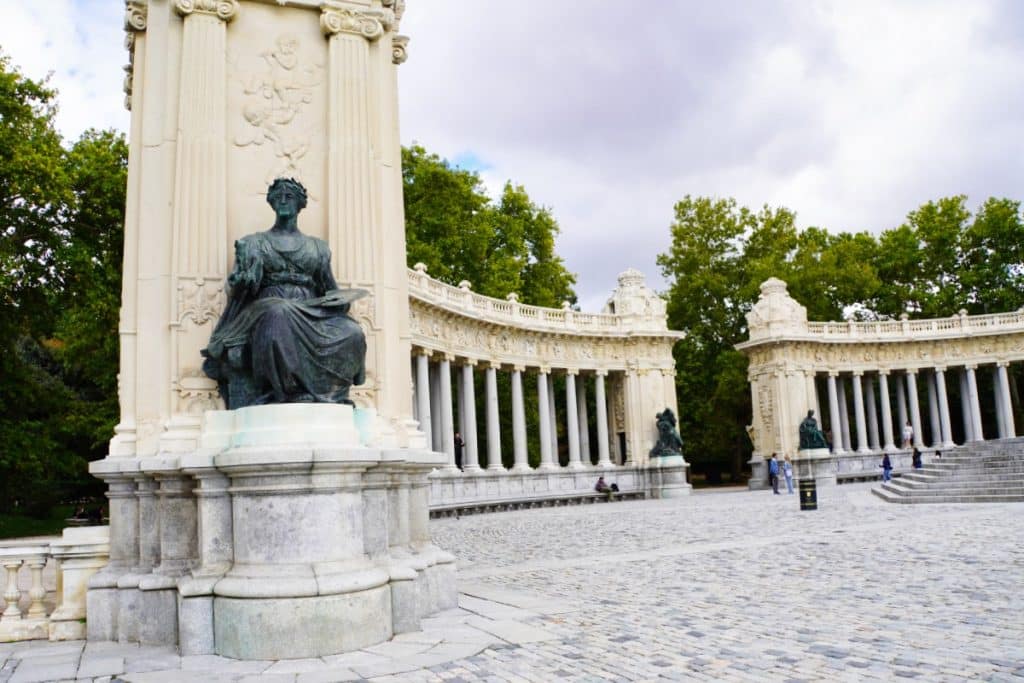
Behind the equestrian statue is the colonnade in which several statues by different artists have found their place.
Address:
Retiro,
28009 Madrid, Spain
Opening hours:
Daily
October – March: 06 – 22 h
April – September: 06 – 24 h
Entrance fee:
free of charge
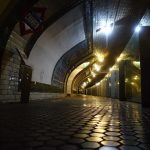
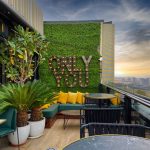
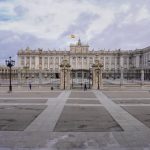
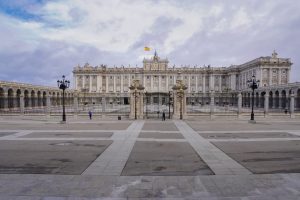
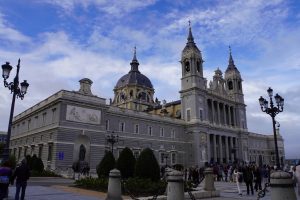
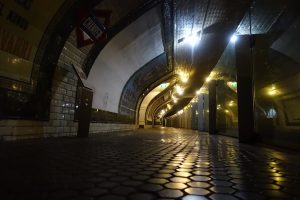
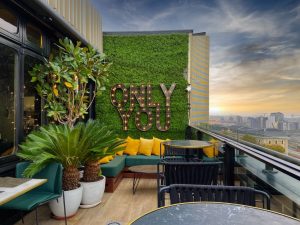
Leave a Reply